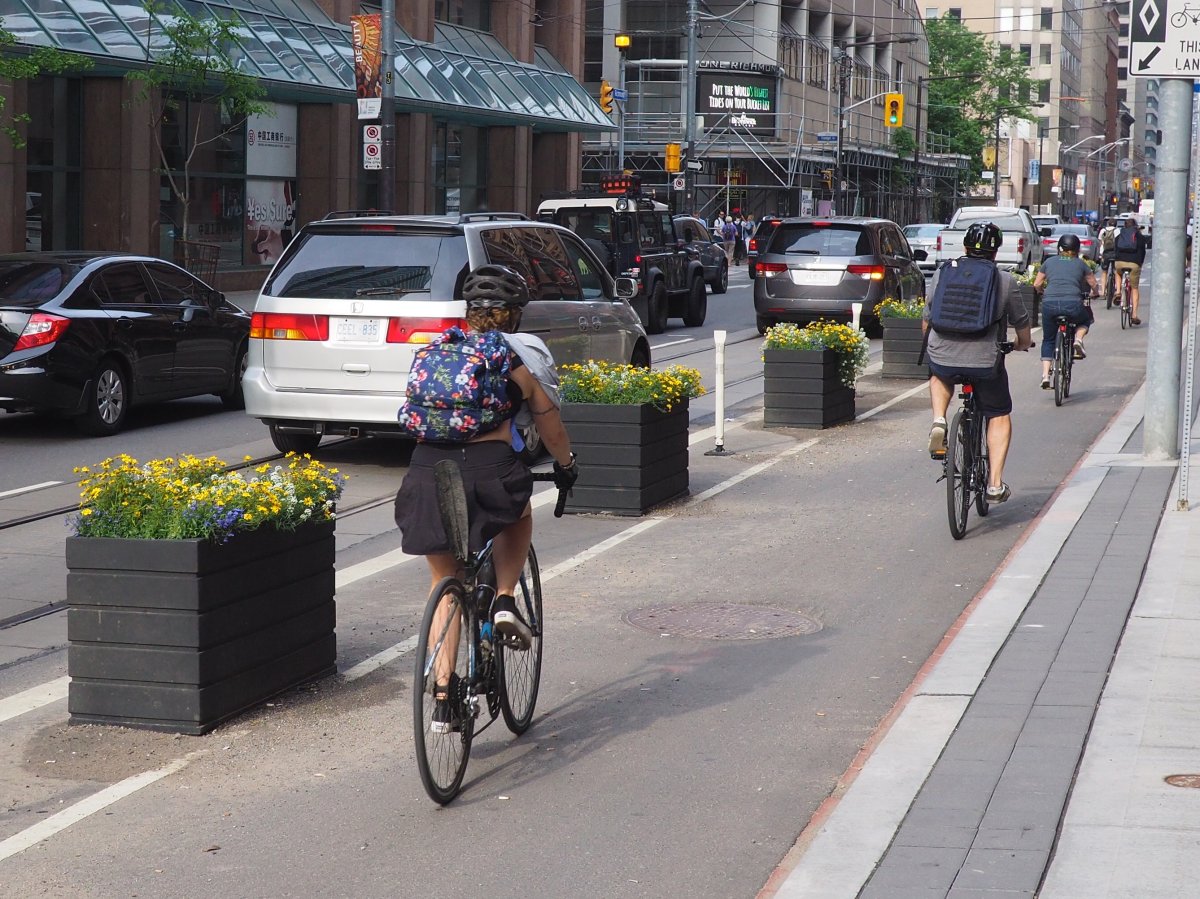If you’re new to cycling in the city, the idea of wheeling around Toronto’s busy streets can be scary. There’s sometimes questions about where you can safely ride your bike and how to avoid accidents.

“We are petrified of cycling in the city,” says Eleni Tripas, a Toronto mother of two boys. “Drivers are careless no matter what time of day it is. And my kids have tried multiple times to ride their bikes safely but they always feel defeated by all the traffic.”
WATCH: Everything you need to know about Bike Share Toronto

While Tripas’s fears are warranted, the number of residents choosing to cycle in the city is growing, Cycle Toronto reports. In areas like Cabbagetown, popularity has grown by as much as 34 per cent.
If you’re looking to join that cohort and feel more confident on two wheels, here are cycling tips for novice bikers, presented in partnership with Live Green Toronto.
Where to bike
Toronto has cycling infrastructure that varies in safety and comfort for cyclists. “We have off-road multi-use trails that go along the waterfront and the ravines,” says Adam Sweanor, coordinator Bicycle Safety Education at the City of Toronto. These trails are separated from cars and so cyclists typically feel the most comfortable riding through these lanes.
Next are cycle tracks, which are protected bike lanes that have a physical separation between motor vehicles and cyclists. You can find these on major roads like Richmond, Adelaide and Bloor streets.
The third option is a quiet-street cycling route. “These are routes with low-vehicle volumes or residential streets with low-vehicle speeds,” says Sweanor. “These are quiet and safe routes to learn how to ride a bike or get comfortable biking,” he says.
While you can find a map of Toronto’s bike routes online, 130,000 printed copies are available in libraries, community centres and bike shops around the city. Mapping out your route to work, for example, and testing out the path before the work week begins is a good way to feel more confident in your biking abilities.
Street smarts
The city is working on increasing Toronto’s bike-friendliness and is spending $60 million on sidewalks and cycling infrastructure in 2019.
With that being said, it’s a smart idea to familiarize yourself with some safety basics before you hop on your bike. This includes wearing a helmet (if you’re under the age of 18, it’s mandatory), stopping at all stop signs and behind TTC doors, installing a bell on your bike and if you’re cycling at night, having a white light on the front of your bike and a red light or reflector at the back.
“You have to be using lights a half an hour before the sun sets and a half an hour before the sun rises in the morning,” adds Sweanor.
If you’re cycling on city streets without designated lanes, remember the one-metre rule. “Cars have to give cyclists one metre space when passing them,” he says. “And if there are parked cars, be one metre away. That gives you a chance to react if someone does open the door.”
Thicker tires also help deal with road imperfections, including streetcar tracks. “If you are crossing tracks, take them slow and cross at a 90-degree angle,” suggests Sweanor.
In the end, if you are feeling uncomfortable in any situation (such as a city bus sitting close to a curb), he adds dismounting and walking your bike on the sidewalk as a pedestrian is always an option.
Where to leave your bike
Bike thefts are another reality that Toronto cyclists face. Between 2014 and 2017, 14,280 bikes were reported stolen Cycle Toronto notes.
However, you can take some preventative measures to minimize your chances of someone stealing your bike. Sweanor recommends finding an indoor space to secure your bike if you’re leaving it for a long period of time. “Either inside your workplace or a parking garage,” he says. “Something that offers more security than a high-quality bike lock.”
He also notes that the City recently opened a bicycle parking station in Nathan Phillips’ Square. It’s an indoor parking facility that’s protected with 24hour video surveillance.
If neither option is feasible, opt for a dedicated bike rack such as the ring stations installed around the city or multi-use racks that can fit up to eight bikes. “If you lock it to a sign post for instance, someone just has to unscrew the sign and take your bike right off of it,” Sweanor warns.
Be sure to buy the right type of lock as well. U-locks offer the best protection unlike cable locks, which can easily be cut through.
“Be cognizant of how many things on your bike are quick release,” adds Sweanor, noting that quick release parts on bikes (such as wheels or seats) allow people to remove parts of your bike quickly and covertly.
His final piece of advice? “If you’re unsure or are ever concerned about a cycling situation, the best thing to do is be aware of your surroundings and go slow,” he says.
Want to know more about cycling in the city? CycleTO has more information including a downloadable copy of the Toronto Cyclists Handbook.




